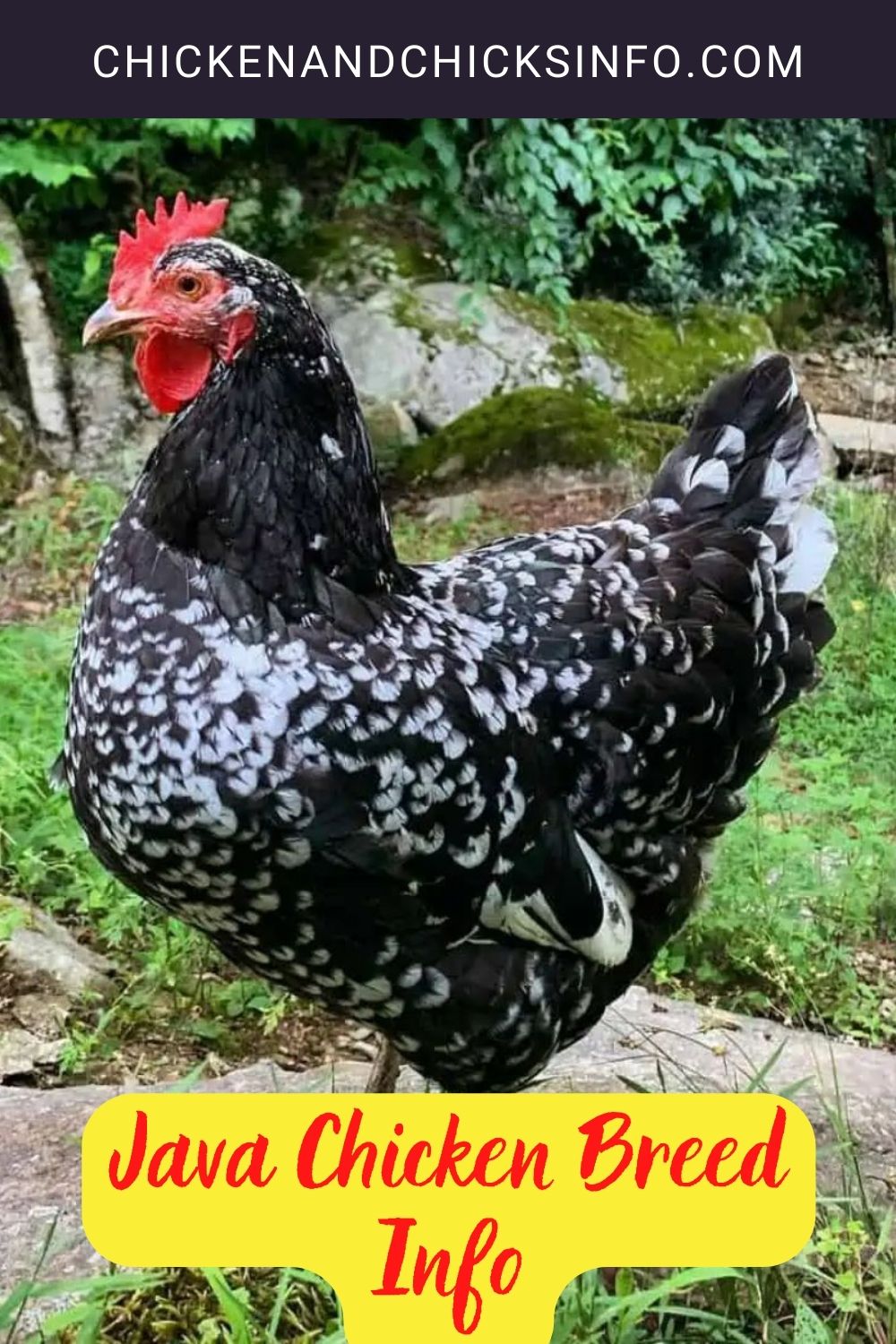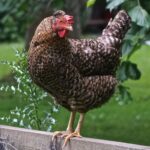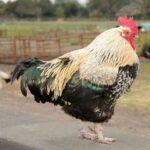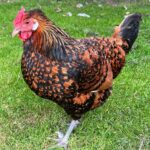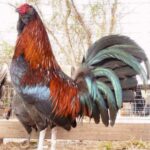The Java chicken breed is a heritage breed that was a popular dual-purpose homesteading bird in the 19th and 20th centuries.
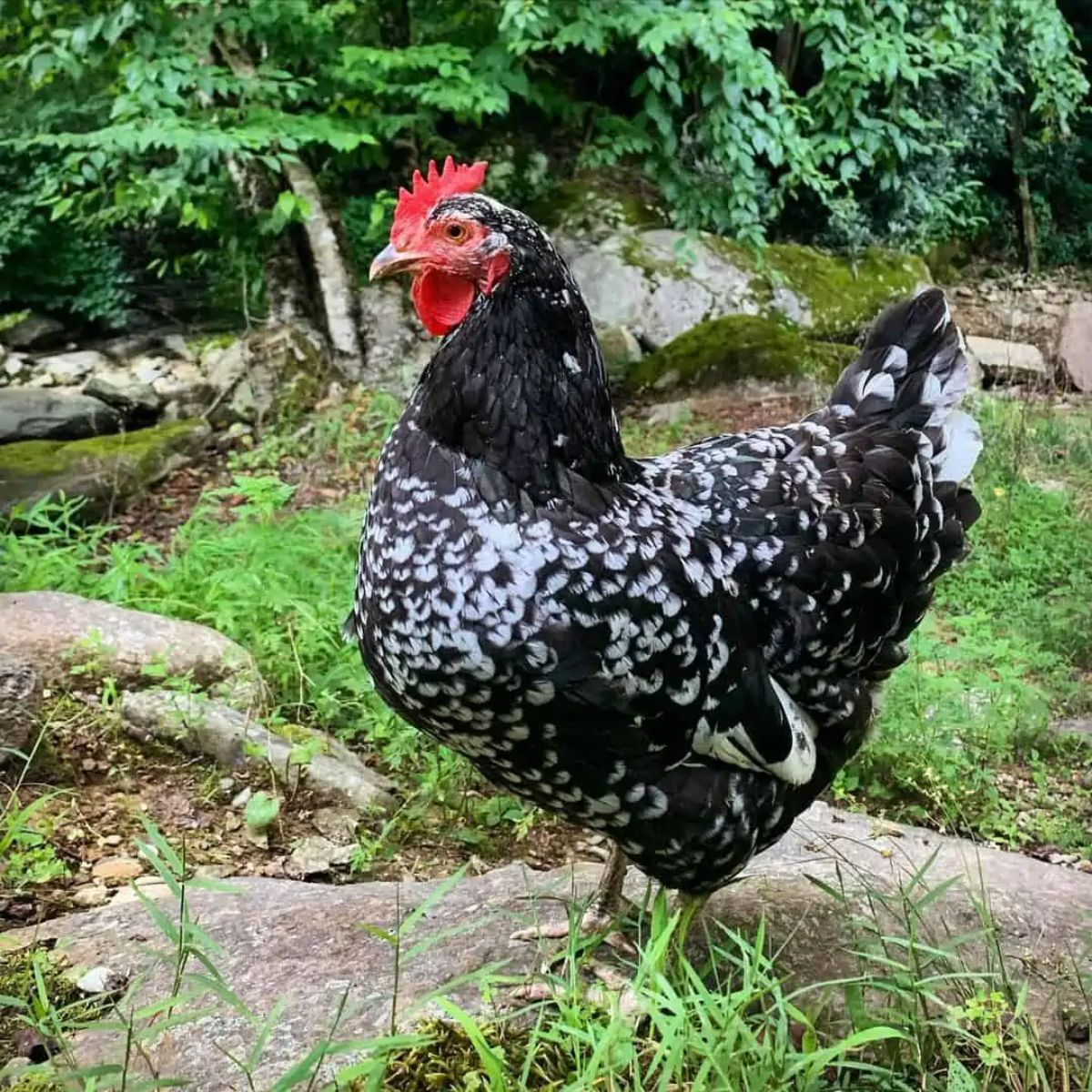
Despite Java having a slower rate of growth than today’s broiler breeds, in the mid-1800s, it was praised as a quality meat bird.
As layers, Javas produce a fair amount of large brown eggs throughout the year. Hens tend to be broody and are excellent mothers to their chicks. They also continue to lay well into the winter and stop laying at an older age than most other breeds.
Jump to:

Java Chicken Breed Quick Info
Java Chicken Description
| Java Type/Size: | Standard |
| Feather Color: | Black, White, Auburn, or Mottled |
| Leg Type: | Clean |
| Leg Color: | Yellow or Black/Blue |
| Skin Color: | Yellow |
| Java Ease of Raising/Keeping: | Easy |
| Java Special Care Needs: | No |
| Is the Java breed a common, rare, or protected breed of chicken? | Rare, “critical” status |
Java Use
| Meat | Yes |
| Eggs | Yes |
| Dual Purpose | Yes |
| Java Temperament: | Friendly, calm |
| Java Ability/Likelihood to Free Range: | Yes |
Java Egg Production
| Egg Color | Brown |
| Egg Size | Large |
| Estimated Number of Eggs Per Year | 150-180 |
| Likeliness to Brood Eggs/Raise Chicks | High |
Java Meat Production
| Dressed Weight Male | 8 lbs. |
| Dressed Weight Female | 6.5 lbs. |
Java Climate Tolerance
| Heat | Good |
| Cold | Good |
Java Age to Maturity
| Number of Months to Reach Full Size | 5 Months |
| Number of Months to Start Egg Laying | 5 Months |
| Number of Weeks/Months to Reach Meat Harvest Size | 16 Weeks |
Java Size at Maturity
| Male | 9.5 lbs. |
| Female | 7.5 lbs. |
Origins of the Java Chicken
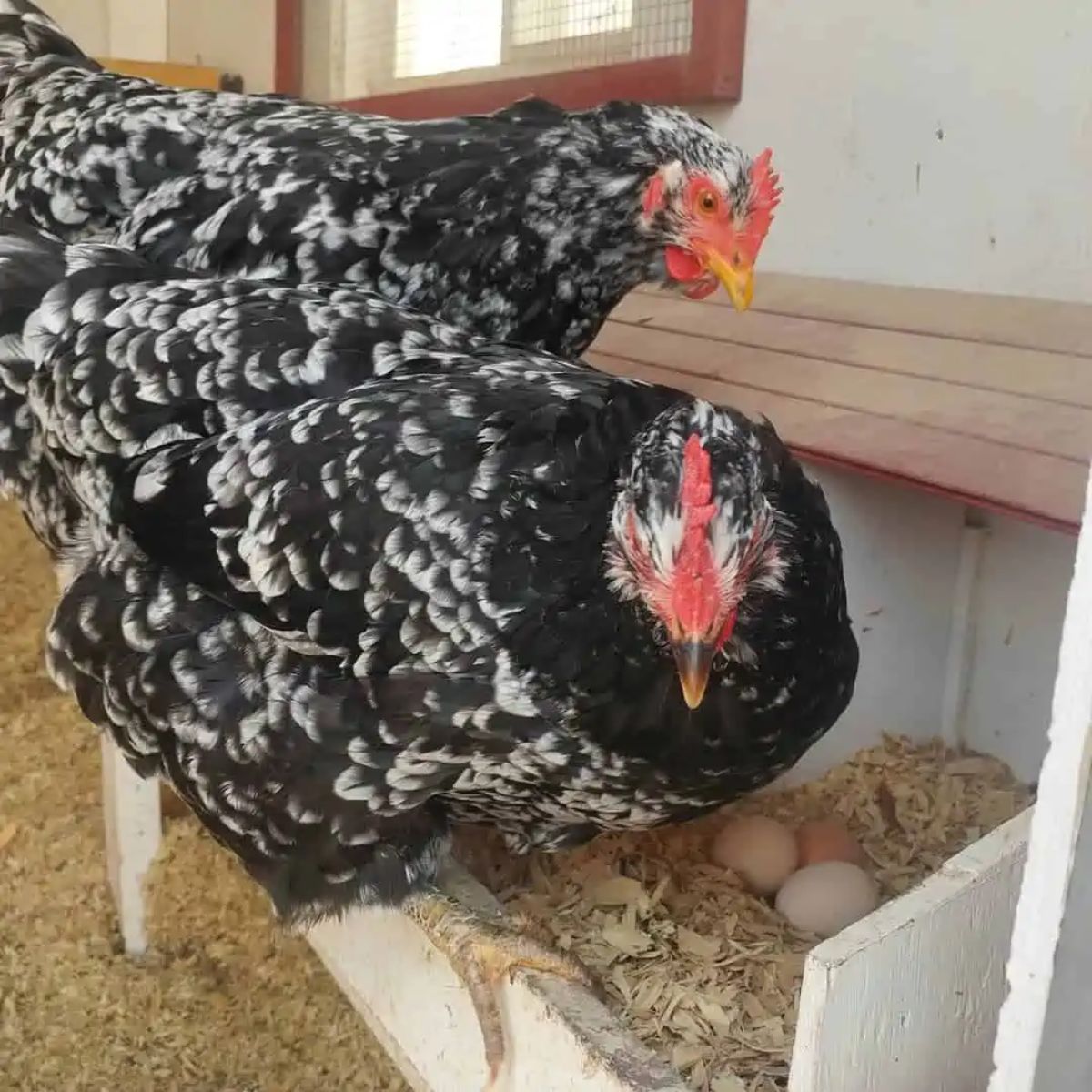
This heritage breed is the second oldest chicken developed in the United States. Before arriving in America, it is believed to have come from the Far East (possibly from the isle of Java) in the early 1800s.
Throughout the mid-to late-1800s, the breed was developed in the United States. They did not enter England until the 1880s. This is significant, as today, purebred Javas from the Isle of Java are only imported through England.
This breed was noted for its meat production in the 1800s, and because of this quality, it was used in the development of several other American breeds. These include the Jersey Giant and Rhode Island Red, among others.
Some Things to Know About the Java Chicken
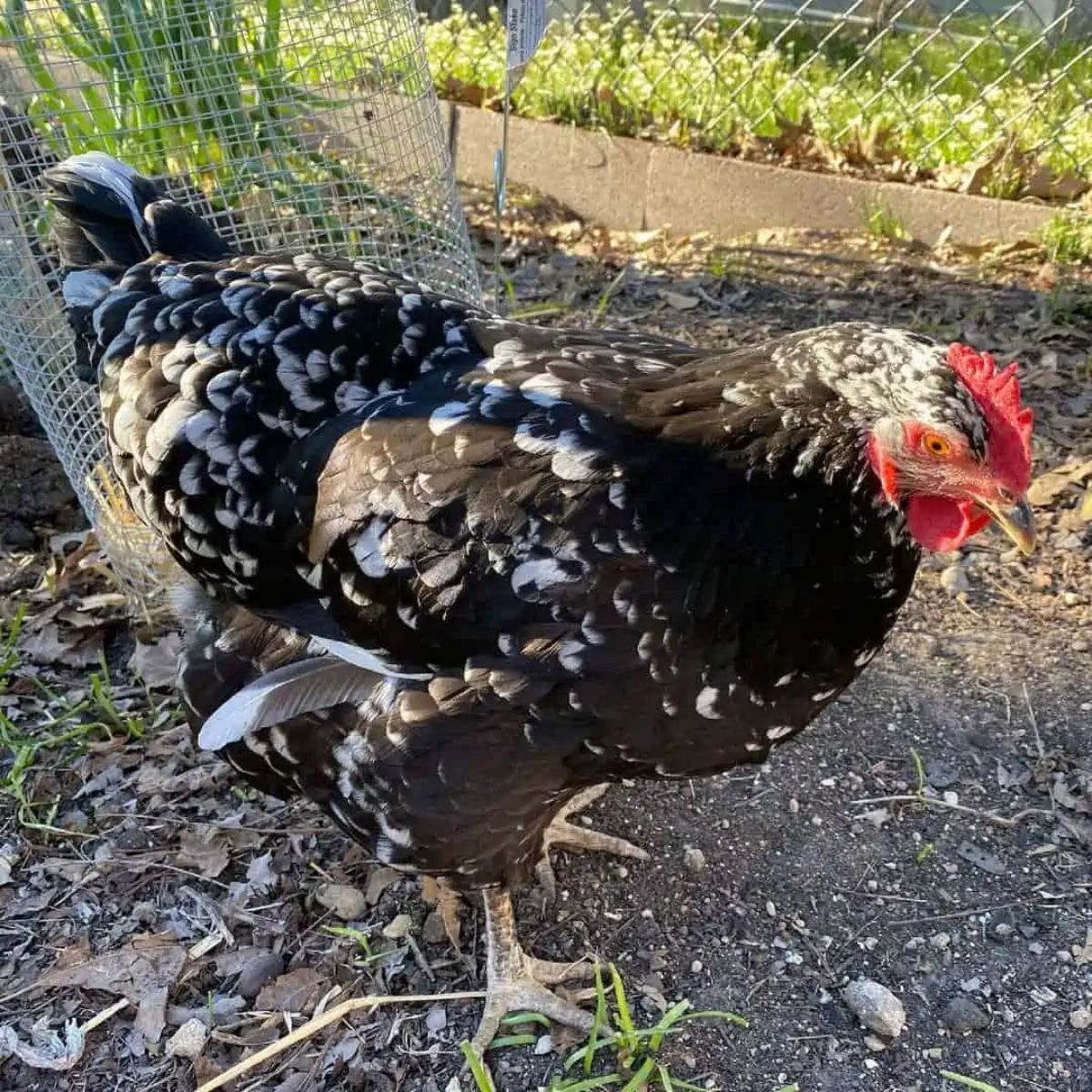
You can find Java chickens in four different colors: black, white, auburn, and mottled. The American Poultry Association only recognizes black and mottled Javas as official breed colors at this time.
The black Java is especially prized for the green, iridescent sheen of its feathers. The mottled color consists of black feathering with splashes of white.
Black Javas have black legs and yellow soles on their feet, while white Javas have yellow legs and mottled Javas have blue legs and yellow soles. All colors of plumage have yellow skin and single red combs.
Javas have a distinctly rectangular-shaped body (similar to a Rhode Island Red) with a sloped topline. They have a long back and full, rounded breasts.
How Easy is it to Keep Java Chickens?
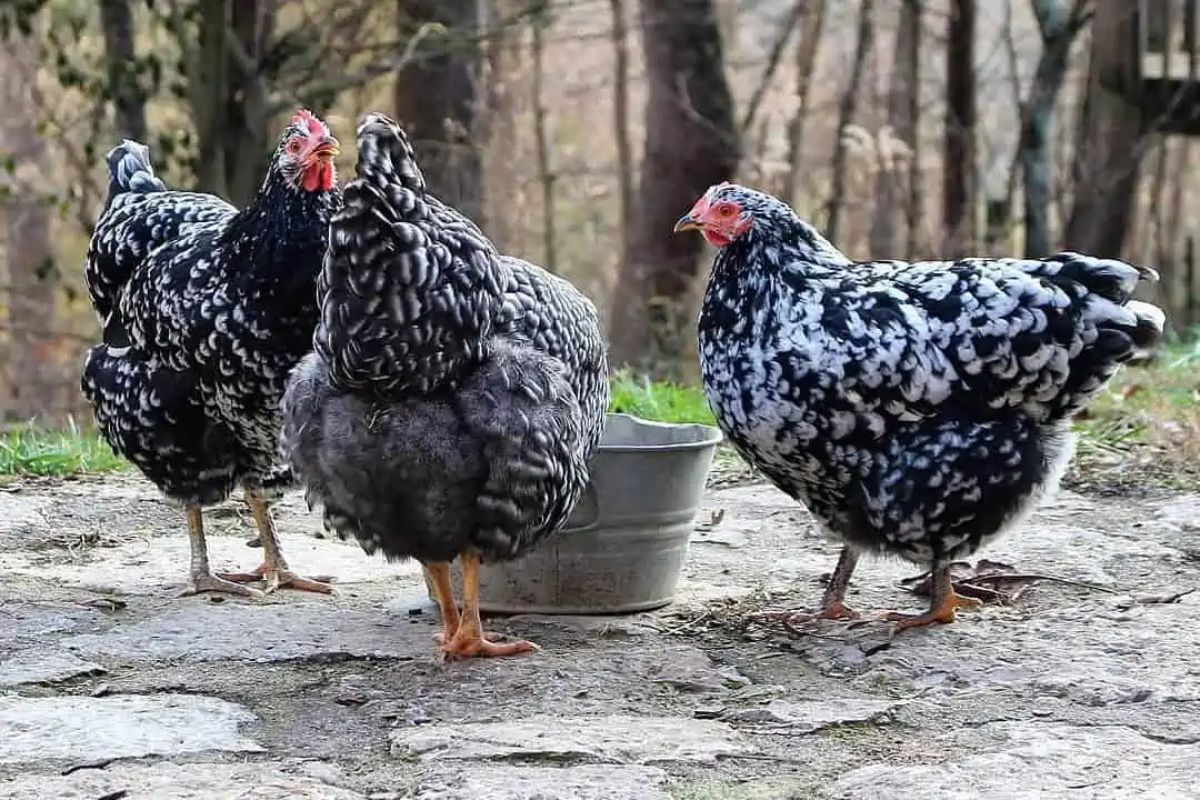
This chicken breed is ideal for beginner chicken owners and children. Their calm, friendly demeanor will capture your heart.
They prefer to live as free-range foragers but can also do well in confinement.
They are able to tolerate both heat and cold weather as long as they are protected from the elements.
You’ll probably notice your Java chickens traveling around in a tight-knit flock — this is a common habit of the breed!
Special Care and Considerations for Java Chickens
As with all chickens with a single comb, care should be taken in cold weather to avoid frostbite. You can put a bit of vaseline on their comb to help protect it from cold temperatures. As a non-aggressive breed of chicken, Javas do best in flocks made up of similarly gentle-natured birds
